
This is free.
Logging day demonstration
Julian Bateson, New Zealand Tree Grower February 2018.
On the last day of the conference was an extra field visit to Greenock Forest. This was a demonstration day about harvesting research work funded predominantly by the levy.
Woody Martin the forest manager for Arbor Forest gave us a quick introduction and a safety briefing.We were told that we were in a safe zone but logging trucks were passing by regularly so had to stay off road, move as a group, stay on the skid site and make sure we wore our high visibility vests and helmets.
We were then given an outline of the day which was for us to be shown, or told about, a variety of projects which were part of the Forest Growers Research programme over the previous seven years. The aim of this research was lower cost harvesting, improving working conditions and getting technology into logging crews.This would eliminate the use of people on the ground in dangerous situations and go a long way towards reducing injuries in forestry to the aspirational target of zero.
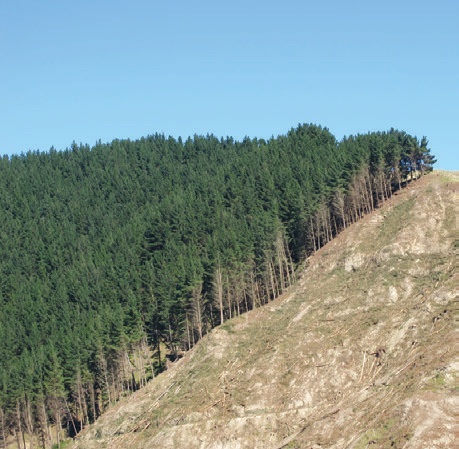
Not to be seen
Before we were allowed outside to look at the big toys on display, we learned about a number of the projects which did not have working examples for us to see. There was the steep slope feller buncher – a lot of which are now being sold. An additional development is a remote control for this machine which means the operator can work it from a safe distance while sitting in comfort.
There was also the robotic tree-to-tree felling machine, one of the more futuristic aims of the research programme. This is still in the very early stages.
Finally, three was something which would have been great to see, a remote-controlled tree-felling wedge. Inside the wedge is a power unit which can tip a tree over. In testing, this worked for most trees, but not every tree. It meant conventional wedges sometimes had to be used as well. The aim is to get the tree faller away from the hazard zone, so if normal wedges have to be used occasionally, more work needs to be done before it can be rolled out to other users. The thought of standing 50 metres away pressing a button and watching the tree tip over sounds like very safe fun, although as we know, it is a lot more than fun.
Drones in action
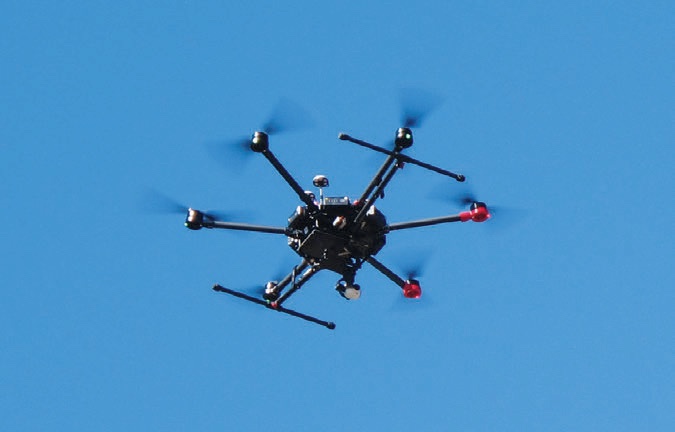
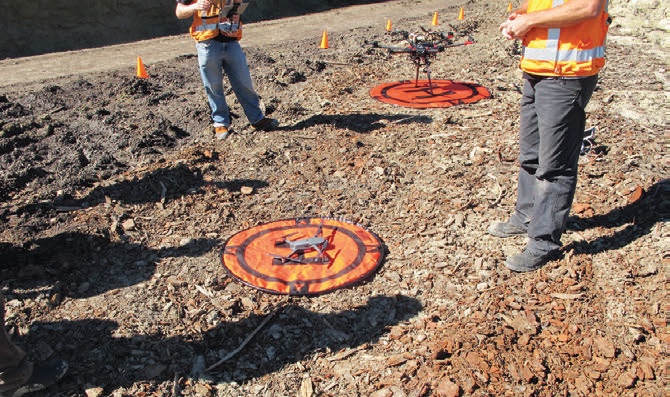
We were then encouraged to go outside and see some of these machines in action. The first ones that group I was in got to see involved the use of drones or unmanned aerial vehicles – UAVs for simplicity. These were demonstrated by Interpine who are involved in remote sensing for forestry from satellites and planes but have found that using UAVs mean you can do a lot more at a lower cost at almost any time you want.
We have heard a lot about UAVs already but it was good to see them in action and talk to those who use them. The smaller drone was one which could go into a back-pack and is easy for almost anyone to fly in winds up to about 35 kph. It has a 12-megapixel camera, which is as powerful as you would want.
For those not used to piloting these machines, there is the get-you-home-safely programme built in. If you lose contact it comes home all on its own and lands on the place it took off from. This small UAV is effectively a flying camera which is as useful for farming as it is for monitoring your forestry work. The price is a mere snip at about $3,000.
Bigger and better
We then got to see the true professional drone in action. This one has six rotors but can fly with one missing, has three GPS units and three computers, a bit like the system you get on an airliner as they check with each other all the time to make sure they agree. It is run with six batteries but can still run on four and can carry a payload of another six kilograms.
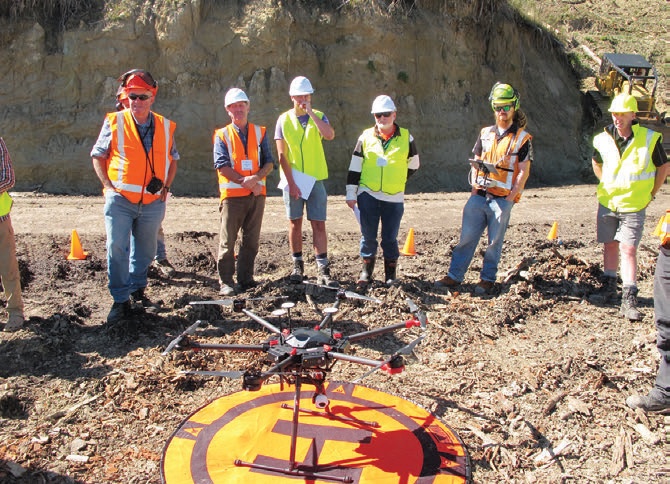
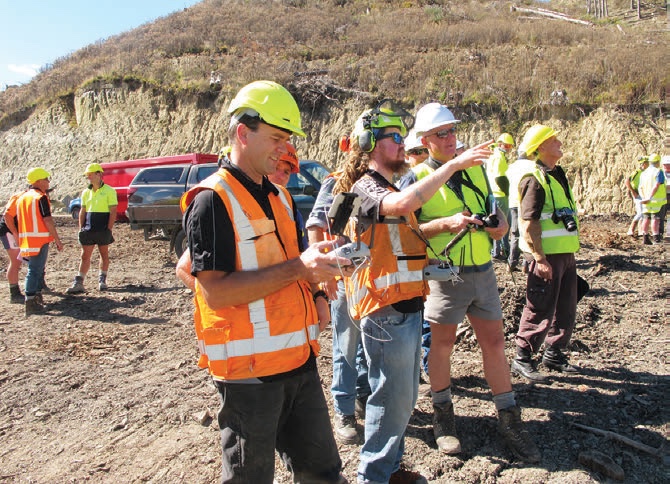
We were told an example of how useful they are in the aftermath of the Porthill fires. A UAV like this was used just after the Porthill fires last year flying all night, every night, for three weeks using thermal cameras to look for any hot spots which could flare up again.
The UAV is not waterproof so cannot fly in full rain although they are becoming more water resistant all the time.The price is not eyewatering, at around $5,500 for the basic model although you will need closer to $20,000 when you add all the bits and batteries and a further $10,000 if you want a thermal camera. You may need to be a professional to get the best out of this big UAV but it can be set to a locked height above the ground so that all the pilot has to do is turn left or right and not worry about where the ground is, however steep or lumpy. However, these drones are still not fully rugged and needs someone to know what they are doing – in other words a trained professional – if they are to do everything needed.
We were warned that if we used a UAV ourselves we had to be aware of risks to property and a simple public liability policy probably does not cover you if there is a mishap. A UAV is defined as an aircraft, even the very little ones. If it falls out of the air from a reasonably height the batteries would probably cause a fire.
Cutover Cam
The process of breaking out – working on a slope with cables chains and logs − is one of the most dangerous harvesting tasks. The Cutover Cam is a camera on a pole placed on the ridge where logs are being hauled out, and linked to a screen in the cab of the hauler operator. This negates the need for the use of hoots, whistles or radios to find out where the workers are on the slope and let them know what the hauler is doing.
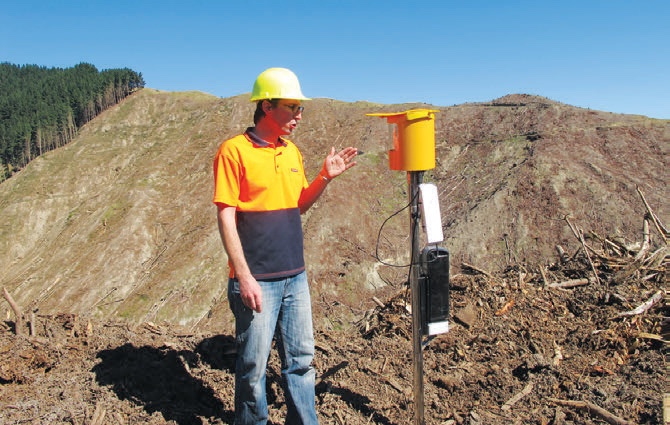
The camera can be remotely made to pan, tilt and zoom, so that the hauler operator can make sure workers, who are breaking out and attaching logs to a line out of a direct line of sight, have retreated at least two tree lengths away from any danger before the log is hauled up the slope. In addition, if a chain or log snags, the operator can see what the problem is rather than just using a bit more force to try and clear the problem.
The cost of the current Cutover Cam is about $18,000 and has proved to be successful. But the next the next example was hot off the bench. It is lighter, more robust and smaller with everything, including the batteries, built in the glass fibre tube. It as simple to plug in and charge as it is to stick in the ground and switch on. The price of this revised version is around $10,000. A solar panel can be attached to keep it charged and save you the problem of taking it back at night, but if it is left out overnight there is a risk of it being stolen.
Remote control again
We also had a quick look at the snappily named Skyshifter twin winch tail-hold carriage. Moving a skyline set-up can take a lot of time and can be quite risky. This carriage allows the work to be done from the cab of the yarder. Production trials are now being carried out after prototype testing in the Bay of Plenty.
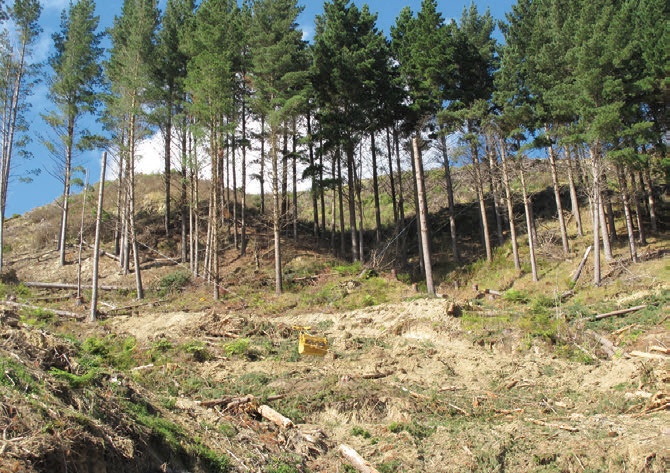
At the end of the visit we heard from Woody Martin about the trials and tribulations of planting and harvesting when trying to get it right from the start. He explained that they planted the trees in his forest at seven metres by 1.2 metres. To make sure the rows up and down the hill were straight, every row had a marker pole. He wanted the stocking to be right and as contour planting can be a bit loose, planting was up the hill, not along the contours.
They were thinned to seven by seven metres but he discovered this was a bit lower than they would have liked for the log lengths wanted. Because the trees grew quite vigorously, they needed to be pruned before age four. The final pruning regime was to prune to 10 cm diameter with four pruning lift to around seven metres.
He found no market for his wood so got investors together and bought a mill but then pruned log prices fell from $1,200 a cubic metre to $400 so the project failed. In spite of that he struggled through and is now harvesting 10 loads of logs a day, trying to get mills to compete with what was the current export price.
Woodlot tree quality
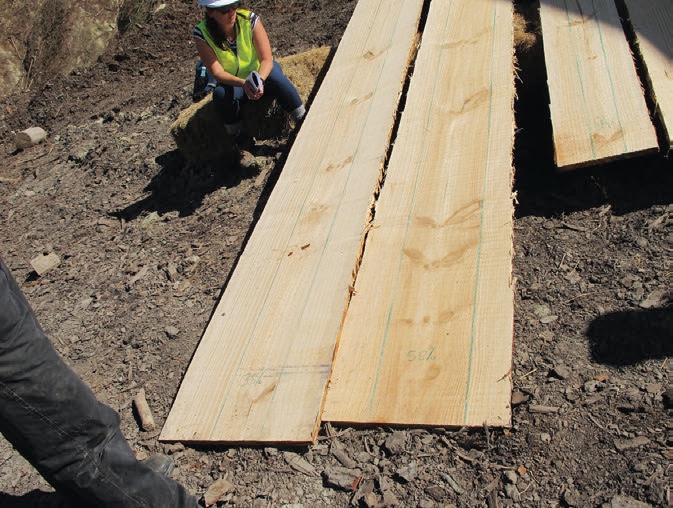
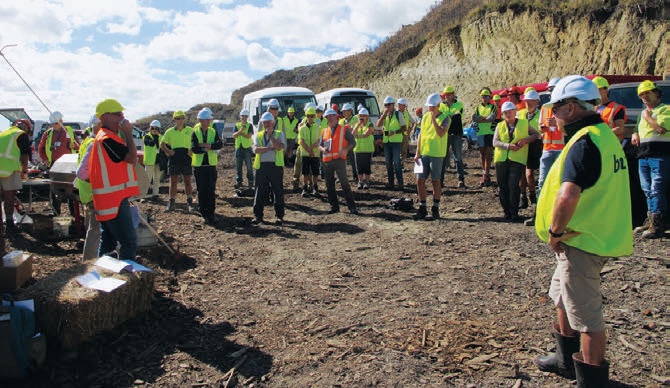
Woody was concerned about wood quality from woodlots and had some examples on display to compare the good with the bad. He was more interested in getting good pruned logs and explained that as many large forestry companies are not pruning, there will be a shortage of pruned trees in the future.
In Woody’s experience, some woodlot owners may prune their trees, but some do it so late that the wood quality is a serious problem. Large branches pruned with a chainsaw leave a large knotty core in the tree. This means the logs may look good from the outside, but are uneconomic for producing clear wood with no knots.
Woody rapidly went through a range of figures and costs. In one example, production from Greenock Forest was used. Currently they get about $127 a cubic metre.With costs at about $110 the profit is around $17 a cubic metre. For production of 3,000 cubic metres a month the profit is just over $50,000. This is for timber which has plenty of clear wood.
He then showed us examples of a tree milled from a woodlot, and those from a better forest. The woodlot tree had very little clear wood and he explained that if they tried to sell those they would only get about $66 a cubic metre gross income and an overall nett loss.
In general, this was not news to most farm forestry members, but it stimulated a good discussion. This had very little to do with the Forest Growers Research, but was well worth taking part. Small-scale foresters have the opportunity to add value if they plan their silviculture, or lose value if they do not. The market may change over the years, but by planning to harvest at the right time, pruning is well worth considering.

 Farm Forestry New Zealand
Farm Forestry New Zealand